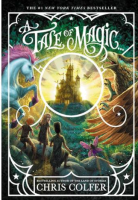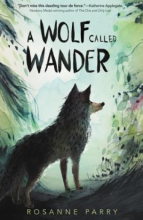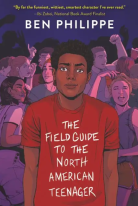Reading with a child is a hugely important developmental activity as it helps youngsters learn new words, broadens their knowledge and provides time to bond with loved ones. So scientists wanted to see if parents and children acted differently when they read books together using traditional media compared with electronic device (电子设备).
To find out, the researchers carried out a study on 37 pairs of parents and healthy children between two and three years old. They asked them to read from three different types of media: electronic books with sound effects or animation; a basic electronic book; and a print book.
Researchers found parents and children spoke more when interacting with a paper book rather than a story on an electronic tablet (平板电脑). What’s more, parents used richer language when using print books compared with tablets. But parents were less responsive and children were less engaged with their parents when reading e-books, Munzer said. Dr Tiffany Munzer, coauthor of the study, told Newsweek: “One of the most surprising aspects is that these findings held true even when parents and children read tablet books with few distracting factors, suggesting it might be the actual tablet device that’s contributing to less conversation between parents and children.”
So should parents give up tablets when reading with their children, or is some reading better than none, regardless of the device?
“That isn’t to say there is no benefit to electronic book reading compared with doing nothing, just less compared with print books. Print books are just better for improving rich language from parents and more conversation between parents and children.” Munzer said that parents always know their children best. “So they should feel free to adjust (调整) the reading experience to what they know their children are interested in, even comics and magazines count as reading.”
1. How many types of media were tested in the research?| A.Two. | B.Three. | C.Four. | D.Five. |
| A.Things that affect reading. | B.People who help reading. |
| C.Tools that attract kids. | D.Contents that fit kids. |
| A.Kids can do it at times. |
| B.There is no benefit at all. |
| C.It will replace the print book reading. |
| D.It should be with more conversations. |
| A.Buy more e-books. |
| B.Talk less when reading. |
| C.Sign up for reading clubs. |
| D.Make reading experience interesting. |
相似题推荐
【推荐1】Dyslexia (阅读障碍) is a common reading disorder. It refers to a language-processing problem in which the brain tends to confuse the order of numbers, letters and other images. Past research showed that crowded text was especially difficult for people with dyslexia to read. So researchers at Anglia Ruskin University wanted to see how much help an increase in the spacing between letters would provide.
Steven Stagg and his team found 59 students between 11 and 15 years old. The kids came from schools in three cities in England. 32 had dyslexia; 27 did not. While the researchers recorded them, each student read two passages out loud. One passage was printed in its original format. In the other, the spacing between the letters was increased by 2.5 points. That extra space equals about 0. 88 millimeters. The recording allowed the scientists to measure someone’s reading speed and count any errors, such as skipped
People with dyslexia often employ aids to help them read, such as colored overlays (透明膜). So the researchers offered those colored plastic sheets to the students here. Readers place the plastic on top of the text and then read through it.
Those colored overlays didn’t help either group of kids. But the extra spacing did. Kids with dyslexia read the wider-spaced text 13 percent faster than the text with original spacing. These kids also made fewer mistakes. Students without dyslexia read faster, too, although only by 5 percent. Stagg studies how the mind processed language. He wasn’t surprised that the colored overlays weren’t helpful. Stagg has dyslexia and says colored overlays never helped him much, either. What was unexpected to the scientist was that wider-spaced letters helped even kids without dyslexia.
This is very good news. It means teachers and publishers can print material with extra spacing between letters knowing it will help everyone. Readers with dyslexia won’t feel singled out by having to use special reading materials. It’s a simple fix, too. Certain text-writing and document— processing software, such as Microsoft Word, can easily add extra spacing between letters. Web designers can add space to the text on their pages, too,
1. What were the students asked to do in the research?| A.Read two passages out. |
| B.Record their reading speed. |
| C.Distinguish the letter space. |
| D.Avoid errors in reading activity. |
| A.The uselessness of the overlays. |
| B.The negative effects of dyslexia. |
| C.The help of wider letter space to kids. |
| D.The reading speed of kids with dyslexia. |
| A.To draw a comparison. | B.To clarify a concept. |
| C.To make a summary. | D.To provide an example. |
| A.Disapproval. | B.Favorable. | C.Doubtful. | D.Unclear. |
【推荐2】Want to know about the biggest page-turners in 2020 for your kids before you buy? Check out our list of New York Times best-selling chapter books
 A Tale of Magic age 12+ ★★★★☆ Imaginative, lively tale. Chris Colfer|Fantasy|2019 | Brystal Evergreen lives in a country where women are forbidden to read. She is a bookworm, trying to find creative ways of getting books. One day Brystal uncovers a secret area of the library and finds a book about magic that changes her life forever… |
 A Wolf Called Wander age 14+ ★★★★★ Exciting & vivid autobiography of a wolf. Rosanne Parry|Animals|2019 | Swift, a young wolf cub(幼崽), lived with his pack in the mountains learning to hunt when they were attacked, and Swift got separated from his family. Alone and scared. Swift must escape and find a new home… |
 The Field Guide to the North American Teenager age 15+ ★★★★★ A funny story of an immigrant teen facing culture shock in U. S. Ben Philippe|Coming of Age|2020 | Norris, a 14-year-old Black French Canadian, arrives in Texas, where his mother gets a teaching job at a university. Though lacking knowledge about U. S. high school life, he tries hard to build a new life… |
1. What do we know about Brystal Evergreen?
| A.She is full of imagination. | B.She discovered a secret library. |
| C.She is fond of reading books. | D.She wrote A Tale of Magic. |
| A.highly recommended | B.centered on animals |
| C.vivid autobiographies | D.happening on campus |
| A.Children. | B.Parents. | C.Writers | D.Publishers |
【推荐3】Connecting with peers, professors, and staff members is a fundamental part of having a good college experience. But students don’t always know how important those relationships are — or how to form them. A new book is here to help. Connections Are Everything: A College Student’s Guide to Relationship-Rich Education is the follow-up to Relationship-Rich Education: How Human Connections Drive Success in College. The first book’s authors, Peter Felten and Leo M. Lambert, have added two more for the second: Isis Artze-Vega and Oscar R. Miranda Tapia.
While professional in research, Connections Are Everything is accessible. It’s a quick read, and its tone is friendly. Each chapter ends with a few reflection questions and a few concrete actions students can take to reach out to other people on campus. The book draws on a large body of student interviews, and it features stories from a diverse group of students attending all sorts of colleges.
Felten pointed out, many colleges do talk about connecting during orientation (入学教育), and many professors do on the first day of class. “So it’s not like institutions don’t do anything about this,” he said. But sometimes, Felten added, those messages get lost, especially in the initial, busy adjustment to college. “A faculty member might say, ‘I’m available, and I’m here to support you,’ and all this, but the student is still trying to figure out how the online platform works, or whatever it is. So sometimes we do a great deal of orienting, without recognizing that these are humans we’re dealing with, and they’re really overwhelmed.”
While the book emphasizes many people on campus can help students, it also makes clear that a college education isn’t something that happens to you, but something you build. For about a decade, Artze-Vega said, there’s been a lot of emphasis on how professors can better support their students in the classroom. The book, in contrast, says “it’s a shared responsibility”. The book encourages students “to use their agency and to take an active first step,” she said. That is something Artze-Vega thinks will appeal to professors, who, after all, are tired. When students are empowered to take charge of their own education, the authors emphasized, not everything falls to faculty members. And besides, students who are empowered are simply more fun to teach.
1. What makes Connections Are Everything a practical book?| A.Its authors’ creativity. | B.Its narrative writing style. |
| C.Its authors’ academic backgrounds. | D.Its various student samples. |
| A.Far-reaching. | B.Ineffective. | C.Personalized. | D.Advanced. |
| A.Mutual communication should be enhanced. |
| B.Students’ initiative also plays a key role. |
| C.Interaction among peers is of more importance. |
| D.Professors’ guidance is a must in and out of classroom. |
| A.A researcher in college. | B.A senior in high school. |
| C.A freshman in university. | D.A teacher in kindergarten. |
【推荐1】First impressions can set a lasting tone, but there is often something doubtful. Psychologists have documented a phenomenon known as the liking gap, whereby two people meeting for the first time routinely underestimate how much their counterparts (对应方) like them. A new study finds that the liking gap occurs in group settings too and affects how well groups function.
In one experiment, the researchers divided 159 participants into groups of three and asked them to have a conversation. They then surveyed the participants individually about how much they liked each of their partners, how much they thought each partner liked them, and how much they thought their partners liked each other. On average, people liked their partners more than they believed their partners liked them, and thought themselves to be the least liked in the group.
In a subsequent experiment, the researchers asked similar questions of engineering students who had worked together in design competitions for varying lengths of time. Here, too, people tended to underestimate the degree to which they were liked, regardless of how long they had known their teammates — and their dim views of their own likability reduced their willingness to ask others for help, give honest feedback, and work together in the future.
A final experiment involving a broad sample of workers showed that the misperceptions (误解) were strongest among teammates and that they decreased team effectiveness and job satisfaction. It also found a possible explanation for the liking gap: People tend to focus on positive thoughts when reflecting on how much they like someone else (“I’m happy that she got a promotion”) but fall victim to more negative ones when considering how others view them (“I got a promotion, so she might be green with envy”).
Managers should think carefully not just about how teammates regard one another but about how team members think they themselves are regarded, the researchers say; correcting misperceptions could boost team satisfaction and performance. “If only people knew how positively their teammates actually felt about them, they might communicate better, feel more included on their teams, and be happier overall with their jobs,” they write.
1. What does the liking gap refer to?| A.A type of social anxiety disorder. | B.Love among different age groups. |
| C.Misjudging others’ opinions of us. | D.Holding back others’ evaluations. |
| A.People did not like to give honest comments. |
| B.People tended to think little of their partners. |
| C.People were quite demanding towards others. |
| D.People were not very confident about themselves. |
| A.Conflicting. | B.Negative. | C.Conventional. | D.Strong. |
| A.Employees’ viewpoints on themselves. |
| B.The relationship between team members. |
| C.Employee promotion and job satisfaction. |
| D.Communication between leaders and employees. |
【推荐2】Before your puppy can start offering its tricks for a specific reward, it needs to learn them! When training is started at seven to eight weeks of age, use methods that rely on encouragement and gentle teaching. Puppies have short attention spans (持续时间), so training sessions should be brief, but should occur daily.
Puppies can be taught to sit, lie down, and stand using a method called food-lure (食物引诱) training. Small pieces of food or a favored toy can be used to motivate your puppy to perform most tasks. Provided the reward is appealing enough, the puppy can be encouraged to give the desired response by showing the puppy the reward, moving the reward to get the desired response and then after some time, pairing a cue (a verbal command) with the behavior.
You should only ask your puppy to perform a behavior with a verbal cue once you are sure the puppy knows it well. If the puppy does not immediately give the behavior on the first encouragement, then you are likely proceeding a little too quickly. If you keep repeating the cue, the puppy will learn that several repetitions are acceptable before it needs to respond.
You do not necessarily need to train in a set session daily. Rather, integrate these tasks throughout the day. A goal to strive for is at least 15 minutes of training every day. These can be short five-minute sessions spread throughout the day. Try to have all family members ask your puppy to do these tasks. Remember to try and train in every room of your house. You want your puppy to sit, lie down and stay everywhere, not just in the training location.
1. What is advised to do at early dog training?| A.Stick to strict disciplines. | B.Set it as a routine every day. |
| C.Do training with an adult dog. | D.Never divide the time into periods. |
| A.When it is strong enough. |
| B.At the age of seven to eight weeks. |
| C.After it can understand your orders. |
| D.When it has learned all basic behaviors. |
| A.Introduce a new topic for discussion. | B.Summarize the previous paragraphs. |
| C.Add some background information. | D.Call on family members to help training. |
| A.The fun in training puppies. | B.Benefits of keeping puppies. |
| C.Things puppies do in daily life. | D.Basic manners for puppy training. |
【推荐3】Narasimha Das is on his way to feed 169,379 hungry children. Das is in charge of a kitchen in Vrindaban. The town is about a three-hour drive from India’s capital, New Delhi. Das gets to work at 3:00 a.m. Thirty workers are already working to make tens of thousands of rounds of bread. It will be brought to 1,516 schools in and around Vrindaban.
A Growing Problem
Going to school is difficult for more than 13 million children in India. They must go to work instead, or go hungry. That’s why India began the Mid-Day Meal Scheme, the largest school-lunch program in the world. A free lunch encourages children to come to school and gives them the energy they need for learning. The program began in the 1960s.
The kitchen in Vrindaban is run by the Akshaya Patra Foundation. It is one of the lunch program’s biggest partners. “Just $11.50 can feed one child for an entire year,” said Madhu Sridhar, president of the Akshaya Patra Foundation.
Lunch Is Served!
The Akshaya Patra food truck arrives at Gopalgarh Primary School. Since the program started, the number of underweight children has gone down. The children get foods they need — as long as they finish what’s on their plates.
1. What does Narasimha Das do?| A.A waiter. | B.A salesman. | C.A cook. | D.A shopkeeper. |
| A.the poor | B.school children | C.college students | D.the old |
| A.Because they have to work to make money. |
| B.Because there are not enough schools. |
| C.Because there are not enough teachers. |
| D.Because their parents refuse to send them to school. |
| A.It is to encourage children to go to school. |
| B.It has been carried out for about 50 years. |
| C.It is run by Narasimha Das. |
| D.It is the largest school-lunch program in the world. |



